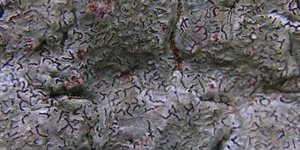The Field Identification of the species within Sticta fuliginosa s. lat. in Britain
Sticta fuliginosa s. lat. in western Europe has recently been split up into four separate species by Nicolas Magain & Emmanuël Sérusiaux in a paper that can be downloaded from this link. I have long found well developed Sticta sylvatica easy to spot but had been quite confused by Sticta fuliginosa s. lat., including where to draw the line with Sticta sylvatica. Now I know why; this spilt has really helped resolving a confusing range of morphology into discreet species that are relatively easy to identify in the field where reasonably to well developed. To date three of the four species have been identified from Britain and the fourth could occur.
In Britain Sticta fuliginosa s. lat. is a widespread but rather local taxa of oceanic Britain (see map). It has clearly been lost from areas damaged by acidifying pollution in the past and is restricted to little disturbed wooded habitat within its surviving range. The taxa is assessed in Britain being an International Responsibility species (i.e. with more than 10% of its European or international population found in Britain). It is also assessed and being a Vulnerable red list species in Wales. As such it is important that the distribution of the recently defined segregates are mapped out; they are not likely to be equally distributed or threatened.
Magain & Sérusiaux (2015) provides a tentative key to the species of Sticta in Europe which are lichenised with Nostoc. The key in the paper is a bit cramped, so I have reproduced this key as a PDF in the style of The Lichens of Britain and Ireland, which I find easier to read. This can be downloaded from the linked page.
This key works well in my experience but includes a dichotomy involving cross sectioning the thallus and examining at x400 quite early, where Sticta ciliata and Sticta fuliginoides are separated from Sticta sylvatica, Sticta fuliginosa s. str. and Sticta atlantica. Doing cross sections is a good way of confirming you have the species sorted out, however, the species can usually be identified in the field without this microscopic work. Also as species of high conservation interest one does want to avoid continual collection. As such I have produced individual pages of hints for the identification of the species found in Britain: Sticta ciliata, Sticta fuliginoides and Sticta fuliginosa s. str. along with the most similar species Sticta sylvatica.
The fourth species in Sticta fuliginosa s. lat., Sticta atlantica, has so far only been found in the Azores and south west Ireland and I have not seen it. Potentially it could occur in the most oceanic parts of Britain, so should be looked out for. The thallus is somewhat branched, but not as regularly as Sticta sylvatica, with the most distinctive feature being small and irregular swellings on its upper surface of the thalus on which the isidia develop. On the underside the tomentum is much sparser, with the tomentum looking like rhizines.
I have also produced a page summarising what can be surmised of the ecology and distribution of the species in Britain as known to date.



